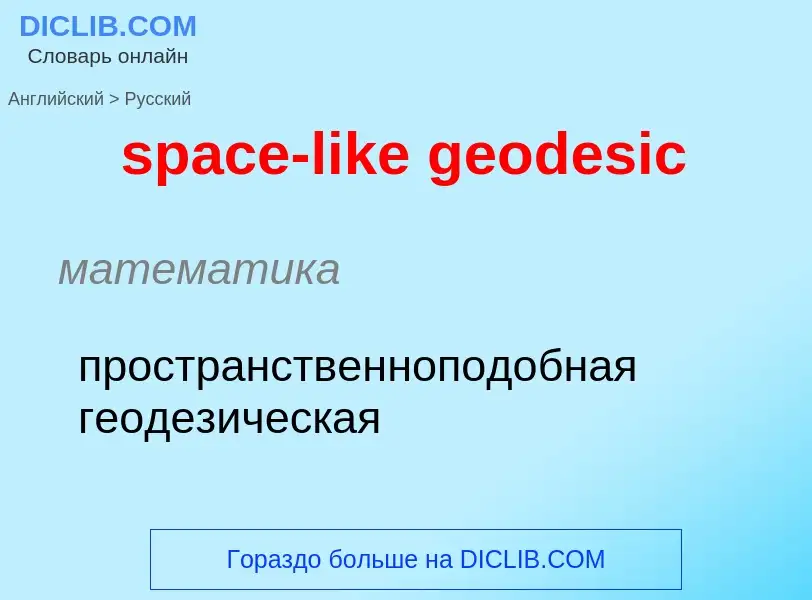Tradução e análise de palavras por inteligência artificial ChatGPT
Nesta página você pode obter uma análise detalhada de uma palavra ou frase, produzida usando a melhor tecnologia de inteligência artificial até o momento:
- como a palavra é usada
- frequência de uso
- é usado com mais frequência na fala oral ou escrita
- opções de tradução de palavras
- exemplos de uso (várias frases com tradução)
- etimologia
space-like geodesic - tradução para russo
математика
пространственноподобная геодезическая
[dʒi:ə(u)|'desik-{dʒi:ə(u)}'di:sik]
общая лексика
геодезическая линия
геодезическая окружность
геодезическая прямая
геодезический
синоним
математика
геодезический путь
Definição
Wikipédia
In geometry, a geodesic () is a curve representing in some sense the shortest path (arc) between two points in a surface, or more generally in a Riemannian manifold. The term also has meaning in any differentiable manifold with a connection. It is a generalization of the notion of a "straight line".
The noun geodesic and the adjective geodetic come from geodesy, the science of measuring the size and shape of Earth, though many of the underlying principles can be applied to any ellipsoidal geometry. In the original sense, a geodesic was the shortest route between two points on the Earth's surface. For a spherical Earth, it is a segment of a great circle (see also great-circle distance). The term has since been generalized to more abstract mathematical spaces; for example, in graph theory, one might consider a geodesic between two vertices/nodes of a graph.
In a Riemannian manifold or submanifold, geodesics are characterised by the property of having vanishing geodesic curvature. More generally, in the presence of an affine connection, a geodesic is defined to be a curve whose tangent vectors remain parallel if they are transported along it. Applying this to the Levi-Civita connection of a Riemannian metric recovers the previous notion.
Geodesics are of particular importance in general relativity. Timelike geodesics in general relativity describe the motion of free falling test particles.


